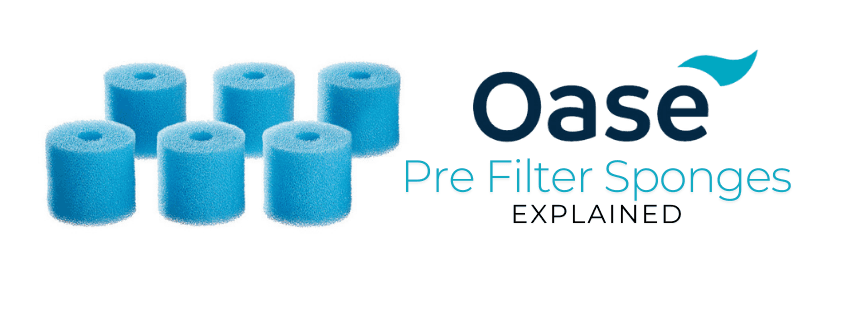A Guide to Oase Biomaster Prefilter Sponges
Maintaining Optimum Filter Functionality: A Guide to Oase BioMaster Prefilter Sponges
The Oase BioMaster is a popular external canister filter, celebrated for its efficiency and reliability in maintaining a healthy aquarium environment. A key factor in its success is the use of high-quality BioMaster Prefilter Sponges, which play an essential role in preserving water quality. These sponges act as the first line of defence, capturing debris before it reaches the main filter chamber.
Understanding the Role of BioMaster Prefilter Sponges
The prefilter sponges in the Oase BioMaster are strategically designed to trap large particles, such as fish waste, uneaten food, and plant debris. By preventing these particles from clogging the main filter, the BioMaster Prefilter Sponges help prolong the lifespan of your filter media and reduce maintenance frequency. However, over time, these sponges will become clogged with debris, reducing their efficiency and restricting water flow.
How to Test If Your BioMaster Prefilter Sponges Need Replacing
To ensure your Oase BioMaster continues to perform at its best, it’s essential to check the condition of your prefilter sponges regularly. Here are two simple ways to test whether your BioMaster Prefilter Sponges need replacing:
- Gently Squeeze the Sponge: Fresh prefilter sponges should feel springy and firm. If the sponge feels soft, mushy, or lacks its original bounce, it’s time for a replacement.
- Visual Inspection: Examine the sponge for visible signs of clogging, such as debris buildup or a noticeable change in colour. Damaged or heavily clogged sponges should be replaced immediately.
Why Replacing Your BioMaster Prefilter Sponges is Important
Replacing your BioMaster Prefilter Sponges is more than just routine maintenance. Neglecting this task can lead to several issues, including:
- Restricted Water Flow: Clogged sponges reduce water flow, which can impact the overall efficiency of your filter and water quality.
- Increased Main Filter Maintenance: If debris bypasses the prefilter, it will clog the main filter media, requiring more frequent cleaning.
- Compromised Water Quality: Overloaded sponges can harbour organic waste and harmful microorganisms, which can impact the health of your aquarium.
Choosing the Right BioMaster Prefilter Sponge Density
Oase offers a range of BioMaster Prefilter Sponges in different densities to suit various filtration needs. Here’s a breakdown of the available options:
- 10 ppi (pores per inch): The coarsest option, allowing for maximum water flow. Ideal for tanks with larger debris, but it may require more frequent cleaning of the main filter.
- 30 ppi: Offers a balanced combination of water flow and filtration efficiency, suitable for most aquariums.
- 45 ppi: Captures more fine particles while maintaining a good water flow rate. Best for aquariums with finer debris.
- 60 ppi: The finest option, providing the highest level of filtration. This density requires more frequent prefilter cleaning.
Carbon BioMaster Prefilter Sponges: Enhancing Water Quality
In addition to standard sponges, Oase also offers carbon prefilter sponges. These specialised sponges help remove unwanted chemicals, including medications and tannins released by some woods. However, carbon sponges have a limited lifespan and should be replaced every four weeks for optimal performance.
The Importance of Maintaining Your BioMaster Prefilter Sponges
While it may seem like a minor task, maintaining your BioMaster Prefilter Sponges is crucial to ensuring optimal filter performance and a healthy aquarium environment. Regular inspections and timely replacements will help your Oase BioMaster operate at peak efficiency, providing clean, clear water for your aquatic life.
Maintaining Beneficial Bacteria in Your Aquarium
Some aquarists worry that replacing BioMaster Prefilter Sponges might result in a loss of beneficial nitrifying bacteria. Fortunately, most of these bacteria reside within the main biological filter media, such as Hel-X. Replacing prefilter sponges has minimal impact on the overall bacterial colony and will not compromise your tank’s nitrogen cycle.
For more helpful guides and aquascaping inspiration, visit our YouTube channel and follow us on Instagram.
Thanks for reading,
Pete



